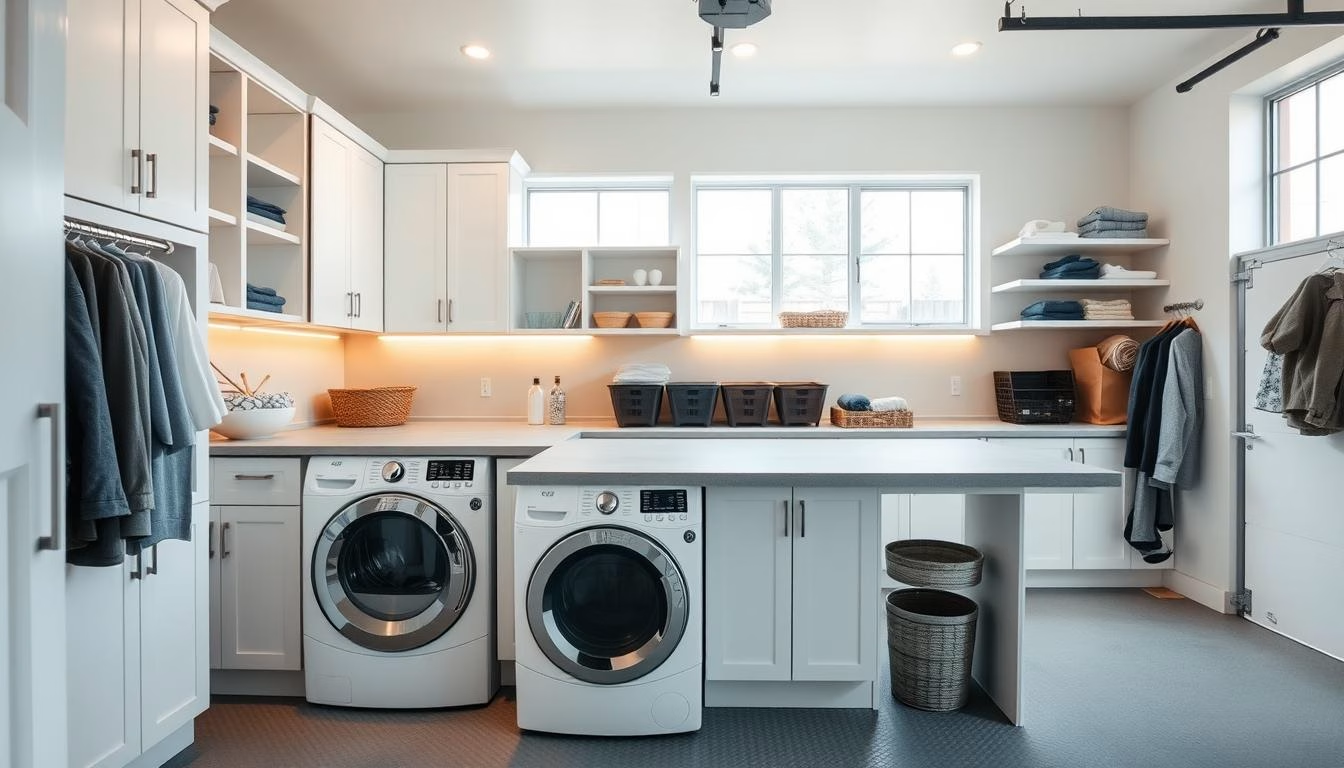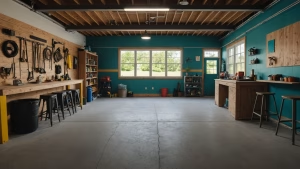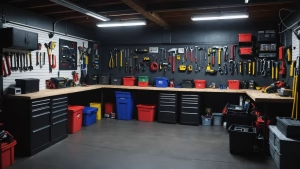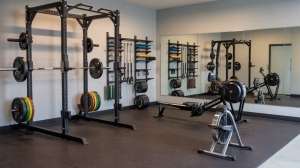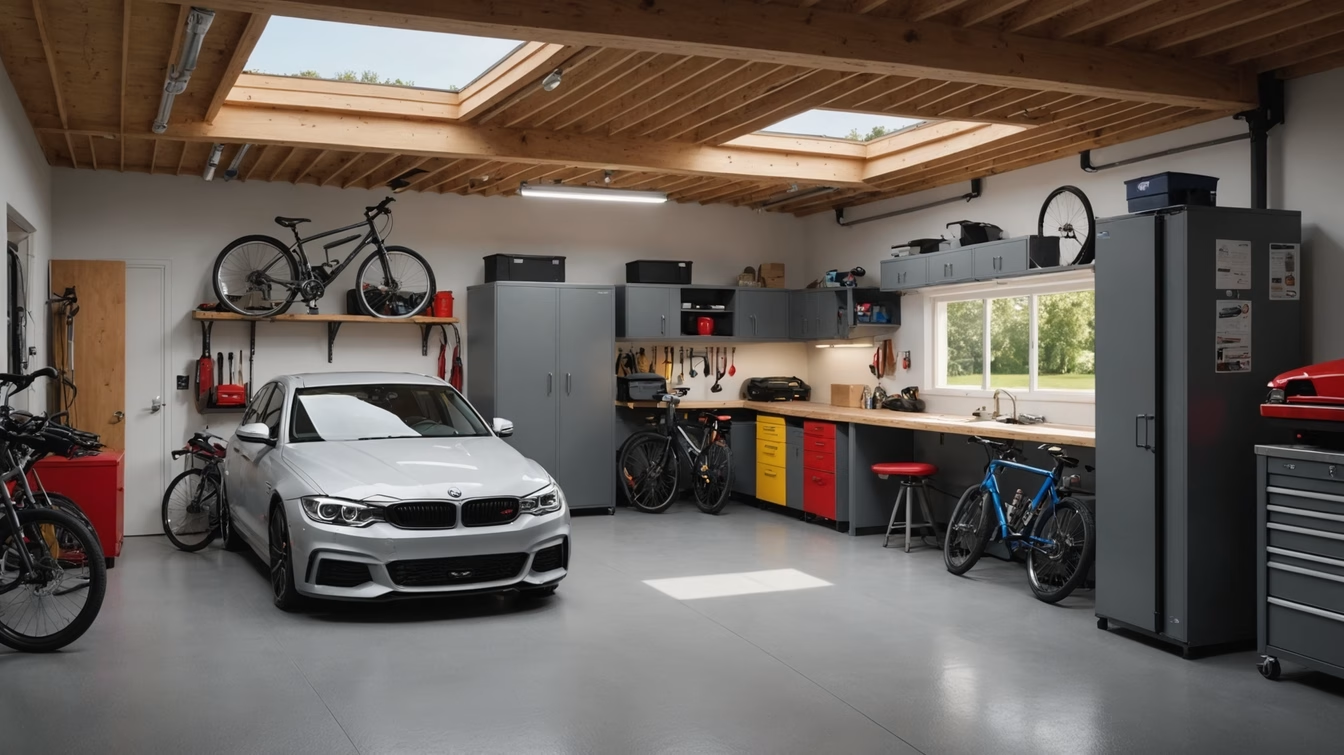Many homeowners are rethinking unused areas to maximize functionality. Converting part of a garage into a dedicated space for washing and drying clothes is gaining popularity. But is this setup practical for everyday use?
This article explores key considerations like temperature control, hidden costs, and smart design solutions. You’ll also find expert advice to help decide if this setup suits your home.
Key Takeaways
- Garage conversions can optimize unused space.
- Temperature fluctuations may affect appliance performance.
- Proper insulation is crucial for year-round use.
- Design hacks can enhance functionality.
- Weigh pros and cons before starting the project.
Introduction: Garage Laundry Rooms—Yay or Nay?
Some love the convenience of a garage laundry setup, while others dread it. One homeowner raves about finally using wasted space, but another grumbles about dust coating freshly washed clothes.
Common frustrations include clutter piling up near cars and freezing temperatures slowing drying times. A survey found 43% of families struggle with making the area feel cohesive with the rest of the home.
But creative fixes exist. Pegboards for supplies and foldable drying racks save space. One reader transformed a corner into a pet-washing station beside their machines. “It’s about working smarter, not harder,” they shared.
| Pain Point | Quick Solution |
|---|---|
| Clutter | Wall-mounted shelves |
| Temperature swings | Insulated appliance covers |
| Limited plumbing | Stackable units to save room |
Before installing hookups, consult an electrician to avoid overloaded circuits. A little planning prevents costly rewiring later. For many, the garage laundry room becomes a love-it-or-hate-it part of daily life.
Pros and Cons of Laundry in Garage
Balancing functionality and drawbacks is key when repurposing vehicle storage areas. Homeowners report split opinions—some praise the extra room, while others battle dust and icy pipes.
Advantages
- More indoor space: Move appliances out of cramped closets or basements.
- Noise reduction: Insulated walls muffle washer dryer vibrations.
- Dual-purpose storage: Add shelves for holiday decor or pantry overflow.
Challenges
- Temperature swings: Cold winters slow cycles; summer heat raises humidity.
- Maintenance: Dust from cars requires weekly wipe-downs.
- Plumbing risks: Uninsulated pipes may freeze during subzero weeks.
Third-party tests show drying bulky items like comforters spikes moisture levels by 30%. Opt for smaller loads to avoid condensation on tools or stored items.
For long-term comfort, consider epoxy-painted floors (resists stains) or raised platforms. One Texas family combined their setup with a dog-wash station—saving 15 square feet indoors.
| Project Upgrade | Benefit |
|---|---|
| False floor | Prevents cold feet in winter |
| Dehumidifier | Controls dampness near stored goods |
Plan wiring and water lines early. Retrofitting after drywall costs 3x more, says a Colorado contractor.
Design Tips for a Functional Garage Laundry Area
A well-planned layout transforms a basic utility zone into an efficient workspace. Start with heavy-duty curtains to section off the area. Brands like Interior Impressions offer washable fabrics that add privacy without permanent walls.
Wood countertops bring warmth and rustic charm. Seal them with moisture-resistant finishes to withstand daily use. For cohesion, pair them with uniform cabinets—Emily Henderson Design recommends semi-gloss finishes for easy cleaning.
Peel-and-stick wallpaper adds personality to plain walls. Michelle Berwick Design suggests bold patterns behind open shelves. Floating shelves above appliances keep detergents and baskets within reach, as seen in Jessica Nelson’s projects.
- Vertical storage: Use wall-mounted racks for ironing boards and brooms.
- Lighting: Install LED strips under shelves for task lighting.
- Color: Light paint (e.g., soft gray) makes small spaces feel larger.
Keep the look cohesive with matching bins and labels. A foldable drying rack tucks away when not in use. Smart design choices balance style and practicality.
Maximizing Storage in a Compact Garage Laundry
Smart storage solutions turn tight spaces into organized hubs. With clever designs, even the smallest area can handle detergents, linens, and cleaning tools. Start by mixing open shelves and pull-out drawers for flexibility.

Lidded glass jars keep supplies dust-free and visible. Scoops inside save counter space. Overhead cabinets store seasonal items like ironing boards or holiday linens. Rolling carts add mobility for bulky supplies.
- Vertical potential: Pegboards hold irons, brooms, and baskets.
- Hidden compartments: Fold-down counters stash socks or clothespins.
- Multi-use bins: Wicker baskets blend style and function.
| Storage Type | Best For |
|---|---|
| Wall-mounted shelves | Daily-use items (detergents, brushes) |
| Pull-out drawers | Heavy supplies (stain removers, towels) |
Repurpose vertical space with hooks or racks. A folding counter doubles as sorting station. Keep the flow seamless with labeled bins and uniform containers.
Temperature Control and Insulation Solutions
Keeping your garage comfortable year-round requires smart temperature solutions. Start with insulating garage doors and windows—this simple project cuts energy loss by 25% according to Energy Star ratings.
Epoxy-painted floors provide thermal mass that stabilizes temperatures. They also resist stains from water spills or cleaning products. For extreme climates, consider ductless HVAC units or radiant heaters.
Protect plumbing with these essential steps:
- Wrap pipes in foam sleeves before winter
- Install freeze-proof outdoor faucets
- Keep cabinet doors open during cold snaps
Moisture control matters too. Dehumidifiers combat humidity from dryer vents. Place them near water sources for best results. Thermal curtains offer budget-friendly ways to insulate garage doors.
| Solution | Benefit |
|---|---|
| Insulated door panels | Reduces drafts by 40% |
| Radiant floor heating | Maintains even warmth |
For quick fixes, DIY insulation kits transform garage spaces efficiently. Remember to seal gaps around electrical outlets—these small leaks add up over time.
Keeping Your Garage Laundry Clean and Tidy
A clutter-free garage laundry space starts with smart cleaning habits. Weekly sweeps prevent dust buildup, while washable runner rugs add comfort underfoot. Jessica Nelson Design suggests textured mats for high-traffic zones.
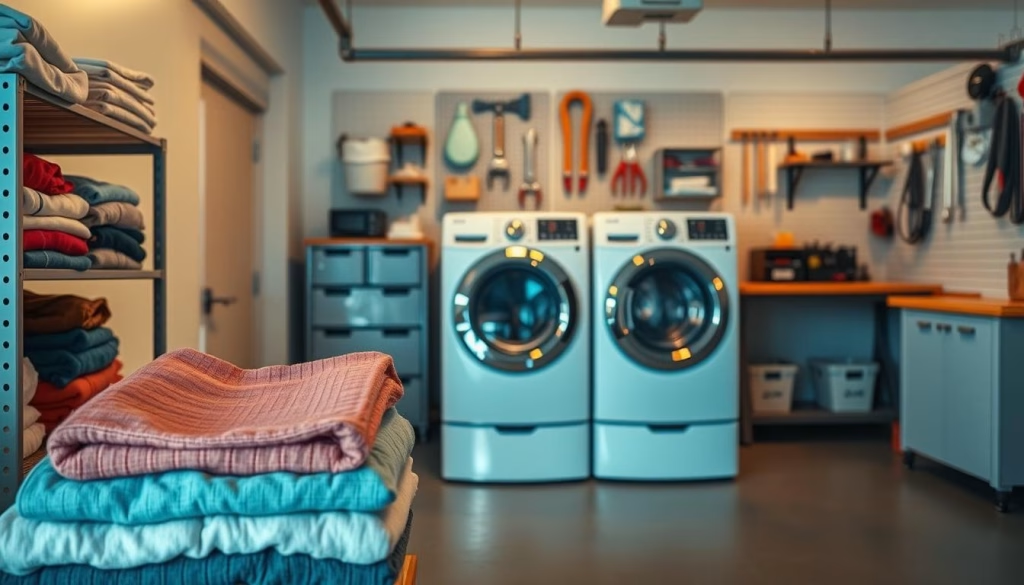
Monthly decluttering sessions keep the area functional. Sort through items like old detergents or worn-out brushes. Donate unused products to free up space for daily essentials.
Safety matters too. Clean dryer vents every three months to reduce fire risks. Use sturdy bins for liquids—plastic containers with seals prevent spills on shelves or floors.
- Team effort: Assign tasks like folding or supply restocking to family members.
- Stain defense: Opt for epoxy-coated floors or stain-resistant countertops.
- Quick fixes: Keep microfiber cloths nearby for wipe-downs after each cycle.
With these routines, the space stays organized and efficient. A little upkeep goes a long way in maintaining a practical workflow.
Safety and Maintenance Considerations
Prioritizing safety measures ensures a worry-free setup for years to come. Simple steps like annual dryer vent cleaning reduce fire risks by 35%, according to the National Fire Protection Association.
For plumbing and electrical work, hire licensed professionals. DIY projects might save money upfront but often lead to costly repairs. GFCI outlets near water sources prevent shocks and short circuits.
- Dryer vents: Clear lint buildup every 6 months to maintain efficiency.
- Washer hoses: Inspect for cracks and replace every 3–5 years.
- Shelving: Anchor heavy units to wall studs to avoid tipping.
Epoxy-coated floors resist slips, while insulated doors minimize drafts. Label circuit breakers clearly for quick shutdowns during emergencies.
| Task | Frequency |
|---|---|
| Vent cleaning | Twice yearly |
| Hose inspection | Every 6 months |
With these precautions, your space remains secure and functional. Regular checks extend appliance lifespans and keep daily routines smooth.
Conclusion: Making Garage Laundry Work for You
Transforming an underused area into a functional spot requires planning. Insulation, smart storage, and multi-use zones turn challenges into advantages. Start with deep cleaning, then add upgrades like wall-mounted racks or epoxy floors.
Christine from Minnesota shared how pegboards and thermal curtains made her space efficient. For major changes like door replacements, consult specialists—Garaga’s insulated models boosted her home’s energy efficiency by 20%.
Small tweaks create big impacts. Share your favorite design tips below!

